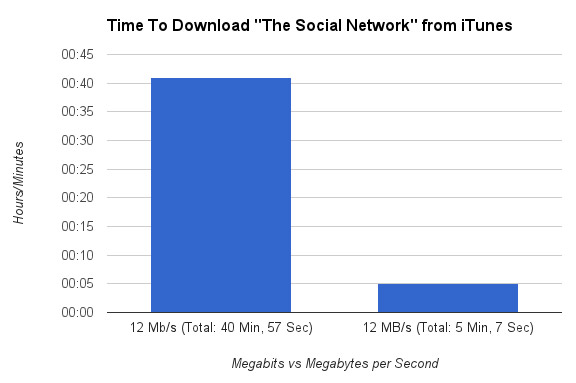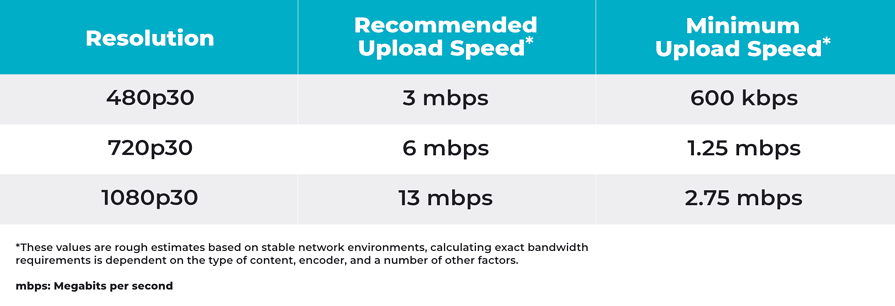The Influence of Megabits Per Second on Streaming Quality and Efficiency
The Influence of Megabits Per Second on Streaming Quality and Efficiency
Blog Article
Exactly How Megabits Per Second Impact Your Online Tasks
The idea of megabits per second (Mbps) plays an essential duty in forming our on-line experiences. Greater Mbps can boost performance and reduce disturbances, while inadequate rates might cultivate disappointment and inefficiency.
Recognizing Megabits Per Second
When thinking about internet speed, it's vital to understand the idea of megabits per second (Mbps), which functions as a standard measurement for data transfer rates. This statistics evaluates exactly how much data can be sent over a net link in one second, offering a clear understanding of performance abilities - Megabits Per Second. For context, one megabit amounts to one million little bits, and Mbps is generally used to express data transfer for numerous on-line activities
A higher Mbps indicates a much faster internet link, allowing individuals to do jobs such as downloading data, searching web sites, and engaging in on the internet gaming more successfully. Common surfing requires around 1-5 Mbps, while streaming high-def video may require 5-25 Mbps. Recognizing these needs is critical for figuring out the appropriate web rate needed for particular tasks.
Furthermore, the variety of gadgets linked to a network can affect total performance. Several users streaming, pc gaming, or downloading and install concurrently can strain readily available transmission capacity, leading to slower speeds - Megabits Per Second. Examining individual online behaviors and needs is vital in selecting a web strategy that straightens with one's needs, guaranteeing a smooth digital experience
Streaming and Buffering Issues
Streaming high-definition content has actually become a staple of modern on-line enjoyment, yet it is frequently accompanied by frustrating buffering problems. These interruptions can significantly interfere with the seeing experience, leading to dissatisfaction and prospective loss of target market involvement. Buffering takes place when the data sent from the streaming service is not gotten quickly sufficient to preserve a smooth playback, often as a result of not enough web speed measured in megabits per second (Mbps)

Moreover, real-time streaming can be affected by network congestion, which happens when numerous tools share the very same bandwidth. Enhancing connection rate and making certain appropriate Mbps is important for a smooth streaming experience. As streaming solutions remain to evolve, understanding the influence of Mbps on buffering problems remains vital for consumers looking for uninterrupted amusement.
Online Video Gaming Performance
The effect of web rate on on-line activities prolongs past streaming, dramatically influencing online video gaming performance. In competitive gaming, low latency and high bandwidth are important for a smooth experience. A rapid connection reduces lag, enabling gamers to react promptly to in-game events, which can be the distinction between victory and loss.
Data transfer, determined in megabits per second (Mbps), plays a crucial duty in supporting several gadgets and video gaming platforms at the same time. Insufficient bandwidth can lead to dropped links or lowered video game quality, negatively influencing gameplay. On-line multiplayer video games call for substantial information transfer, particularly throughout peak gaming hours when many players are online.
Hectic first-person shooters demand higher speeds to preserve responsiveness, while turn-based method games might function reasonably well on lower speeds. As on the internet pc gaming proceeds to develop, with increasing visual fidelity and more complicated multiplayer atmospheres, the demand for higher Mbps will only magnify.
Video Clip Conferencing Quality
In today's electronic landscape, video conferencing top quality is greatly influenced by net rate, particularly in regards to data transfer and latency. Top notch video calls call for adequate transmission capacity to transmit audio and video clip information seamlessly. Generally, a minimum of 1.5 additional hints Mbps upload and download speeds is suggested for standard meaning video, while high-def video clip conferencing usually demands at the very least 3 Mbps.
Latency, or the hold-up in between sending out and obtaining information, additionally plays an essential role in the individual experience. Higher latency can lead to read echo, lag, and disjointed communications, which can impede cooperation and engagement throughout meetings.
In addition, multiple participants in a video seminar can stress readily available transmission capacity, demanding even greater rates. Network blockage, usually triggered by synchronised tasks like streaming or downloading, can better degrade video top quality. Therefore, for organizations relying upon video clip conferencing for remote collaboration, recognizing the connection between megabits per overall and second communication high quality is crucial for preserving productivity and enhancing virtual communications.
Selecting the Right Internet Plan
Choosing an ideal web strategy is important for making sure optimal efficiency in different on the internet activities, specifically in setups that demand high data transfer, such as video clip conferencing and online video gaming. Megabits Per Second. When considering a net plan, it is vital to evaluate both the rate and information allocation to match your certain usage needs
For homes with multiple individuals involving in simultaneous tasks, a strategy using greater megabits per second (Mbps) is recommended. Generally, a minimum of 25 Mbps appropriates for basic streaming and browsing, while strategies exceeding 100 Mbps are preferable for even more extensive tasks. Additionally, take into consideration the nature of your online tasks; video clip conferencing needs a minimum of 1.5 Mbps upload speed, while on the internet pc gaming might need a click here for more lower latency but regular connection.
It is likewise crucial to analyze your information cap. Endless data plans can protect against throttling and interruptions, particularly if hefty usage is prepared for. Lastly, research service companies in your area, as availability and rates can vary. By attentively selecting a web strategy tailored to your demands, you can boost your on the internet experience, guaranteeing smooth, continuous access to your favored activities.
Final Thought
To conclude, the importance of megabits per second (Mbps) fit on-line tasks can not be overstated. Greater Mbps facilitates smooth streaming, decreases buffering, improves gaming experiences, and guarantees high-quality video conferencing. Conversely, insufficient bandwidth can cause frustrating interruptions and lessened performance across different jobs. For that reason, an extensive understanding of private or family Mbps needs is necessary for selecting an ideal web plan that properly sustains diverse online activities and user needs.

Generally, a minimum of 25 Mbps is suitable for standard streaming and surfing, while plans going beyond 100 Mbps are preferable for even more extensive tasks. Additionally, think about the nature of your online tasks; video clip conferencing needs at least 1.5 Mbps post speed, while on-line video gaming might require a reduced latency however regular link.
Report this page